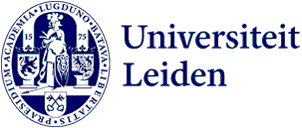Conference | Symposium
Collecting Latin America: Actors, Networks, and Approaches in the 20th century
- Date
- Tuesday 28 June 2022 - Wednesday 29 June 2022
- Address
-
Lipsius
Cleveringaplaats 1
2311 BD Leiden - Room
- 1.47
Museums across Europe and the United States hold innumerable Latin American objects in their collections. A small percentage of these were collected in the Early Modern Era, most, however, were brought together in the 19th and 20th-century. While the trade and collecting of these items in the 19th-century is relatively well-studied and documented, studies of the 20th century market for these pieces is much less-well understood. Still, the 20th century is the moment in which the largest number of pieces reaches museums outside of Latin America. This is especially true for pre-Colonial (archaeological) material, the large-scale market for which took off in the early 20th century and exploded in the 1950s-70s. While some recent scholarship has focused on this market for pre-Colonial objects, research on the networks involved in this phase of the trade is still in its beginning stages.
This symposium brings together researchers and curators from Europe and the Americas interested in the history of collecting ethnographic and archaeological material from Latin America in the 20th century. Presentations focus on the role of dealers, collectors, and academics in the formation of a 20th century market for Latin American objects. Together, these papers present an overview of the different actors and networks that made Latin American accessible to museums in Europe and the US.
Keynote speakers
Mary E. Miller (Director, Getty Research Institute) and Megan E. O’Neil (Emory University)
Keynote address
Stendahl Galleries in Europe: Expanding the Market for Pre-Hispanic Art at Mid-Century
Other speakers
Andrew Turner (GRI), Payton Phillips Quintanilla (GRI), Léa Saint-Raymond (École Normale Supérieure), Anna Antonini (Museo delle Culture), Carolina Orsini (Museo delle Culture), Alexander Brust (Museum der Kulturen), Martin Berger (Leiden), Sophie Brockmann (De Montfort University), María José Jarrín (Sorbonne), Leandro Matthews Cascon (Leiden), Mariana Françozo (Leiden), Nelson Sanjad (Museu Paraense Emílio Goeldi), Matheus Camilo Coelho (Universidade Federal do Pará), Caroline Fernandes (Naturalis), Maria Julia Fernandes Vicentín (USP/Berlin), Donna Yates (Maastricht University), Alice Lopes Fabris (ENS Paris-Saclay)
Mary E. Miller (Director, Getty Research Institute) and Megan E. O’Neil (Emory University)
Stendahl Galleries in Europe: Expanding the Market for Pre-Hispanic Art at Mid-Century
This paper addresses the Stendahl Galleries’ expansion of their trade in Pre-Hispanic art from its center in Los Angeles to New York and Europe in the late 1950s and early 1960s. Founded by Earl Stendahl in 1911, the gallery adopted Pre-Hispanic art as its principal inventory in the late 1930s. Building on the Galleries’ history of enlarging their client base by mounting exhibitions in their own space and at other institutions and museums, and depending on the next generation of the Stendahl family, the Stendahl Galleries opened an outpost in New York City at 11 East 68th Street and organized an exhibition to travel to eight major European cities from 1958 to 1960.
Although billed as museum exhibitions, with illustrated catalogs and mounted at major institutions like the Museum fur Völkerkunde in Vienna, and including items from major European collections (among them the “Penacho de Moctezuma” and the Selden Roll), these exhibitions promoted Stendahl Galleries sales; some museums that hosted Stendahl received commissions for the sales. The Stendahl exhibition program coincided with an exhibition tour of the Mexican national collection, organized by the Mexican government for Expo ‘58 in Belgium, and curated by Mexican museographer Fernando Gamboa. In multiple venues, the two exhibitions merged, although they later split due to conflicts between the Stendahls and the Mexican government. In NYC, they continued to build relationships with some of the same collectors Stendahl worked with in the 1940s (Bliss, Rockefeller, alongside Gallerist Bob Stolper) but also developed new ones (Fred Olsen, alongside New York Gallerists Julius Carlebach, Mrs. Eleanor Ward, Frances Pratt).
Using published sources such as the Stendahl exhibition catalogs alongside the archives of the Stendahl Galleries housed at the Getty Research Institute, which includes substantial correspondence among family members, this paper delves into Stendahl strategies for acquiring and selling pieces, reserving items for particular markets, and cultivating new clients in several countries, whilst ceaselessly promoting the role of Pre-Hispanic art as world aesthetic heritage.
